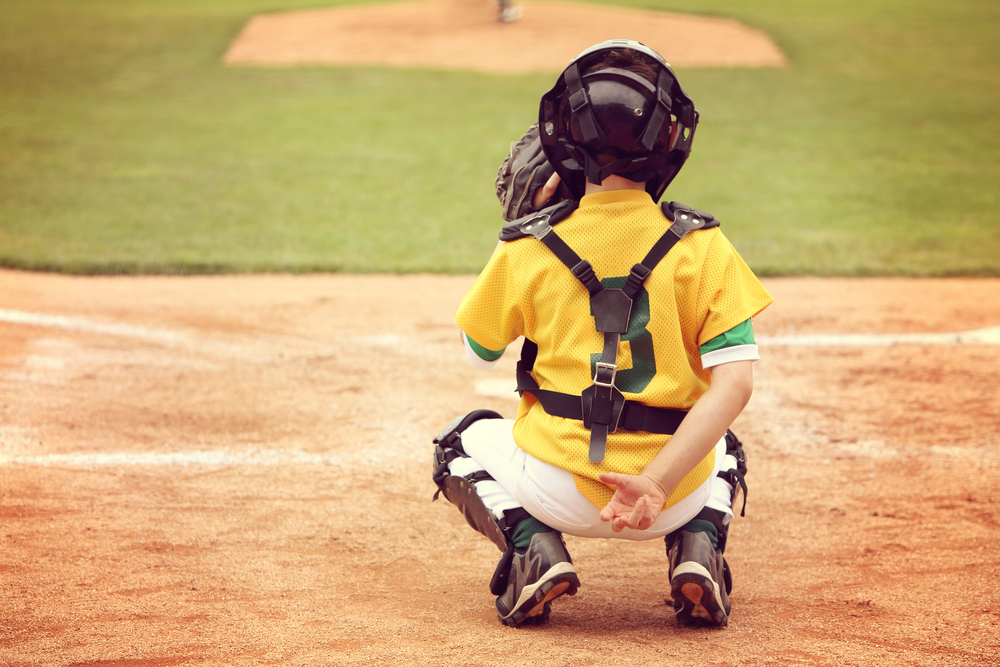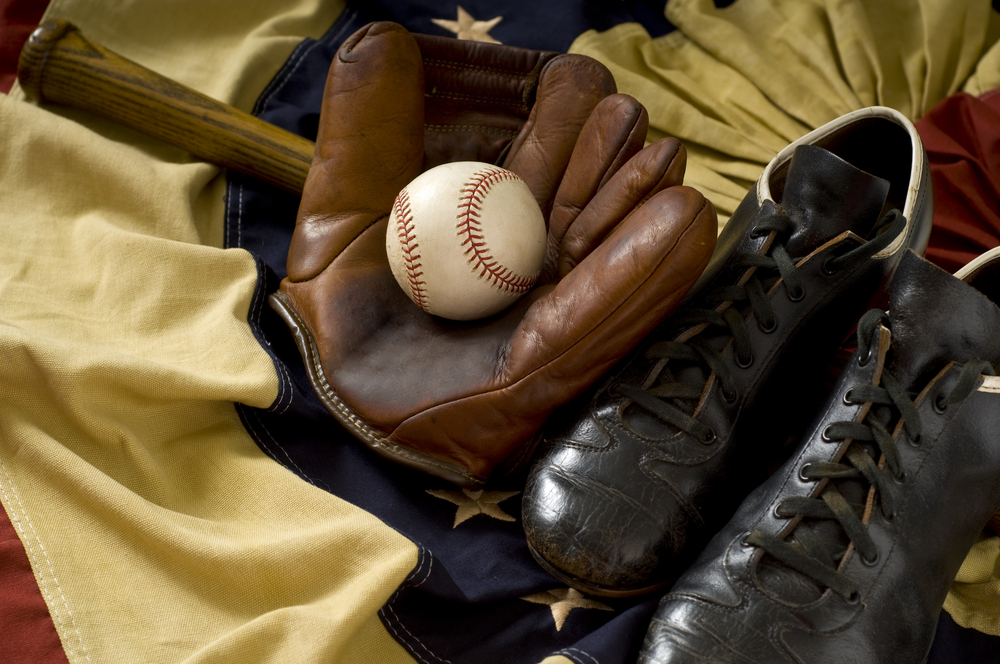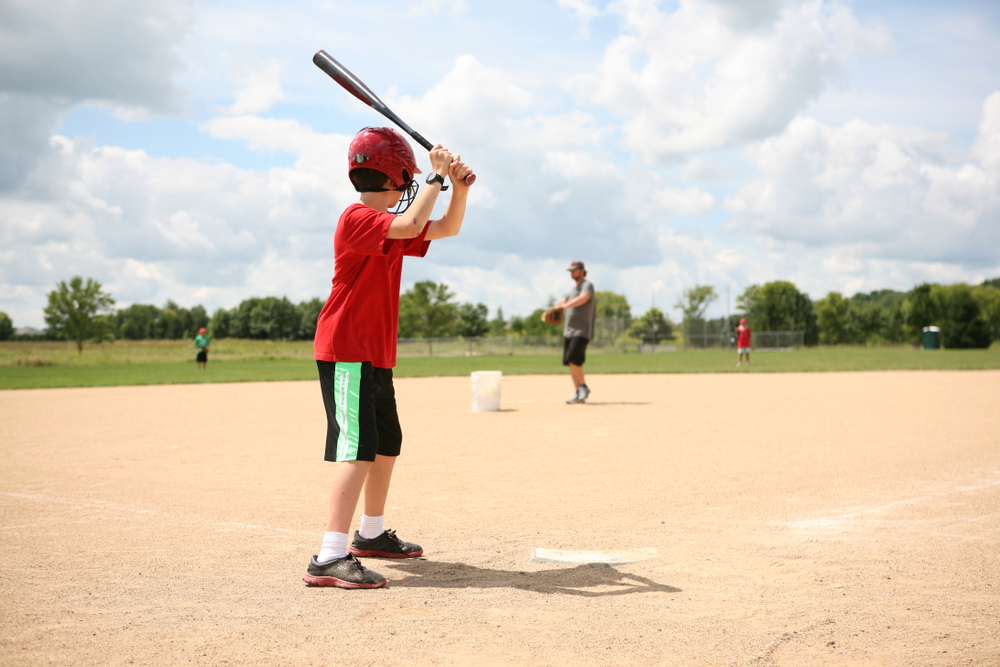Catcher is one of the most challenging positions on the field.
They’re responsible for managing the pitcher, coordinating the defense, and contributing significantly to the game’s outcome. Catcher defense fundamentals encompass a range of skills and strategic decisions that make a world of difference.
Related Post: The Ultimate Guide to Travel Baseball
In this comprehensive guide, Ballparks of America breaks down these fundamentals into critical aspects of the catcher’s role, from pre-pitch preparation to handling plays at the plate.
Pre-Pitch
Before the pitcher releases the ball, catchers must prepare for the upcoming play. This stage sets the foundation for successful catcher defense.
1. Get into a Proper Catcher’s Crouch
A proper catcher’s crouch is a fundamental stance that allows the catcher to be agile, balanced, and ready to move in any direction. Here’s how to do it:
- Squat down with your feet shoulder-width apart or slightly wider.
- Flex your knees deeply, ensuring your thighs are parallel to the ground.
- Keep your back straight, with your chest and chin up.
- Hold your mitt low and in the center, framing the strike zone.
Maintaining this position keeps the catcher agile and ready to react to the pitch. Balance is key.
2. Awareness of the Umpire
Being aware of the umpire’s position and proximity behind you is crucial. Catchers should avoid obstructing the umpire’s view of the pitcher and batter. Maintaining clear lines of sight ensures accurate calls and smooth game flow.
Positioning After a Hit
Catchers must possess excellent play awareness. This awareness helps them make split-second decisions about positioning.
Play Awareness
Play awareness involves understanding the game situation and positioning yourself accordingly. Key factors include:
- Backing up first: If the ball is hit to the infield, the catcher may need to back up the first baseman, covering the base or catching an errant throw.
- Play at the plate: If there’s a possible play at the plate, the catcher should position themselves in front of the dish to receive the throw.
- Backing up third: Similarly, the catcher may need to back up the third baseman on plays at that base.
The catcher’s agility and quick thinking are essential in deciding where to position themselves after a hit, depending on the possible plays.
Throwing to Second Base
When a runner attempts to steal second base, the catcher’s defense skills are put to the test.
What to Do When a Runner Tries to Steal Second Base:
- Quick release: Catchers must develop a quick release, swiftly transferring the ball from the mitt to the throwing hand. This minimizes the runner’s lead.
- Accuracy: A strong, accurate throw to second base is essential. Catchers must aim for the base, allowing the infielder to make the tag quickly.
- Communication: Good catchers are vocal leaders on the field. They alert the middle infielders about the steal attempt, helping ensure proper positioning.
- Blocking the pitch: Catchers should focus on throwing and “blocking” the pitch if it’s low or in the dirt. This involves using their body to prevent the ball from getting past them, ensuring the runner can’t advance further.
- Tagging the runner: Once the ball is received, the catcher must apply a quick, accurate tag to the runner. Proper timing and placement of the tag can make the difference between an out and a stolen base.
Catchers are pivotal in deterring base stealers, requiring speed, accuracy, and communication.
Wild Pitches or Passed Balls
Quick reactions are essential when the ball gets past the catcher, whether due to a wild pitch or a passed ball.
What to Do When the Ball Gets Past the Catcher:
- Retrieve the ball: Catchers must spring into action as soon as the ball gets by. Locate the ball quickly, ensuring it doesn’t roll too far away.
- Communication: Yell loudly and clearly to your teammates, informing them of the situation. If there are baserunners, alert them to the possibility of advancing.
- Recovery: Hustle to retrieve the ball and make a strong, accurate throw to the appropriate base. This throw prevents the advancing runners from taking an extra base.
Quick reactions are essential when handling wild pitches or passed balls, as they can determine the outcome of the play.
Backing Up Throws
In addition to their primary duties, catchers are often required to back up throws from other fielders. This demonstrates the catcher’s defensive awareness and ability to support their teammates.
Hustling Down the Line to Back Up First or Third Bases:
- Backing up first: On-ground balls hit to the infield, especially those to the right side. Catchers should hustle down the line to back up the first baseman. This ensures that any overthrows or missed catches are covered.
- Backing up third: Similarly, on plays at third base, such as pickoff attempts or force plays, the catcher should be positioned behind the third baseman to back up the play.
By backing up their teammates, catchers help create a well-organized defense and minimize potential errors.
Plays at the Plate
Plays at the plate are some of the most intense moments in baseball, and the catcher’s role in these situations is paramount.
Getting into Stance When Receiving a Throw:
Receiving a throw at home plate requires the catcher to assume the proper stance:
- Stance: Position yourself with one foot on the plate and the other foot slightly in front to block the runner’s path.
- Mitt Placement: Hold your mitt in front of the plate to receive the throw.
- Tagging: As the ball arrives, be prepared to apply a quick and accurate tag on the runner.
The catcher’s ability to receive throws and apply tags is crucial in preventing runs and maintaining control over the game.
Contact Ballparks of America
Catcher defense fundamentals are essential for any player aspiring to take on the challenging role of a catcher in baseball. From pre-pitch preparation to positioning after a hit and handling plays at the plate, catchers must master a wide range of skills and responsibilities.
We live and breathe baseball at Ballparks of America. Sign up for one of our tournaments today and take advantage of our amazing facilities, dedicated staff, tons of amenities, and fun local things to do. For questions, contact us at Ballparks of America or at (417) 464-6333.





